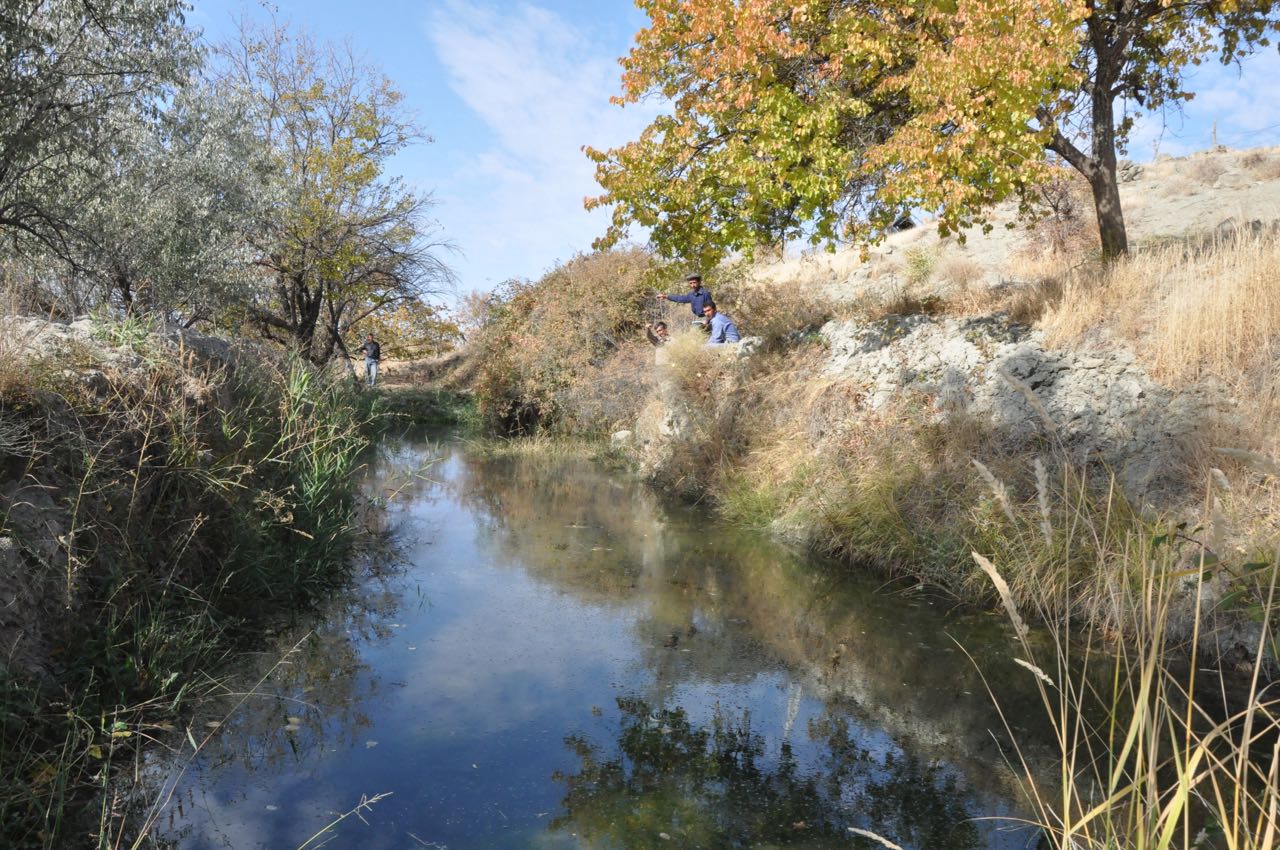


Water for household consumptions as drinking water, as well as for irrigation in agriculture and for watering livestock, is a basic and scarce resource in rural areas of Turkmenistan. Thus, in semi-arid climate, water is a strong driver for development and sustainable land use management.
In 1991, Konegummez villagers were able to build their own water supply system. One person was appointed as mirab (a person responsible for equitable distribution of water and monitoring of irrigation schedules) for further technical maintenance of the system.
In addition to this, with the participation of international development organisations, in 2006 villagers constructed a water well for supplying water to new agricultural land for growing fruit trees and vegetables.
To date, the village owns 4 water wells and 5 catchment dams have been built, where reservoirs with large volumes of water have been formed. These reservoirs not only supply people with water, but also serve as a watering point for livestock.
In order to protect water sources in the in vicinity of the village, villagers planted 10,000 juniper trees. On these conservation sites, grazing of livestock is strongly controlled. The measure went hand-in-hand with reducing the number of livestock significantly.
Due to strongly growing population and growing number of livestock, villagers were urged to look for solutions related to water provision. Based on the clear articulation of their needs and contributing own resources, villagers were able to get the support of government organisations, as well as of international development cooperation for water harvesting and management measures.
The major lesson learnt was that water harvest and management cannot be handled as an isolated issue. It is interwoven with landscape level protection and restoration of natural resources, like natural forests, as well as with managing productive land for agricultural and livestock purposes. Only if these measures are planned and managed in combination, water harvest and management will be successful.
At a technical level, lessons-learnt are related to the need to establish water wells and harvesting surface water in reservoirs, for providing sufficient water for a growing population, and livestock and also diversified agricultural production.